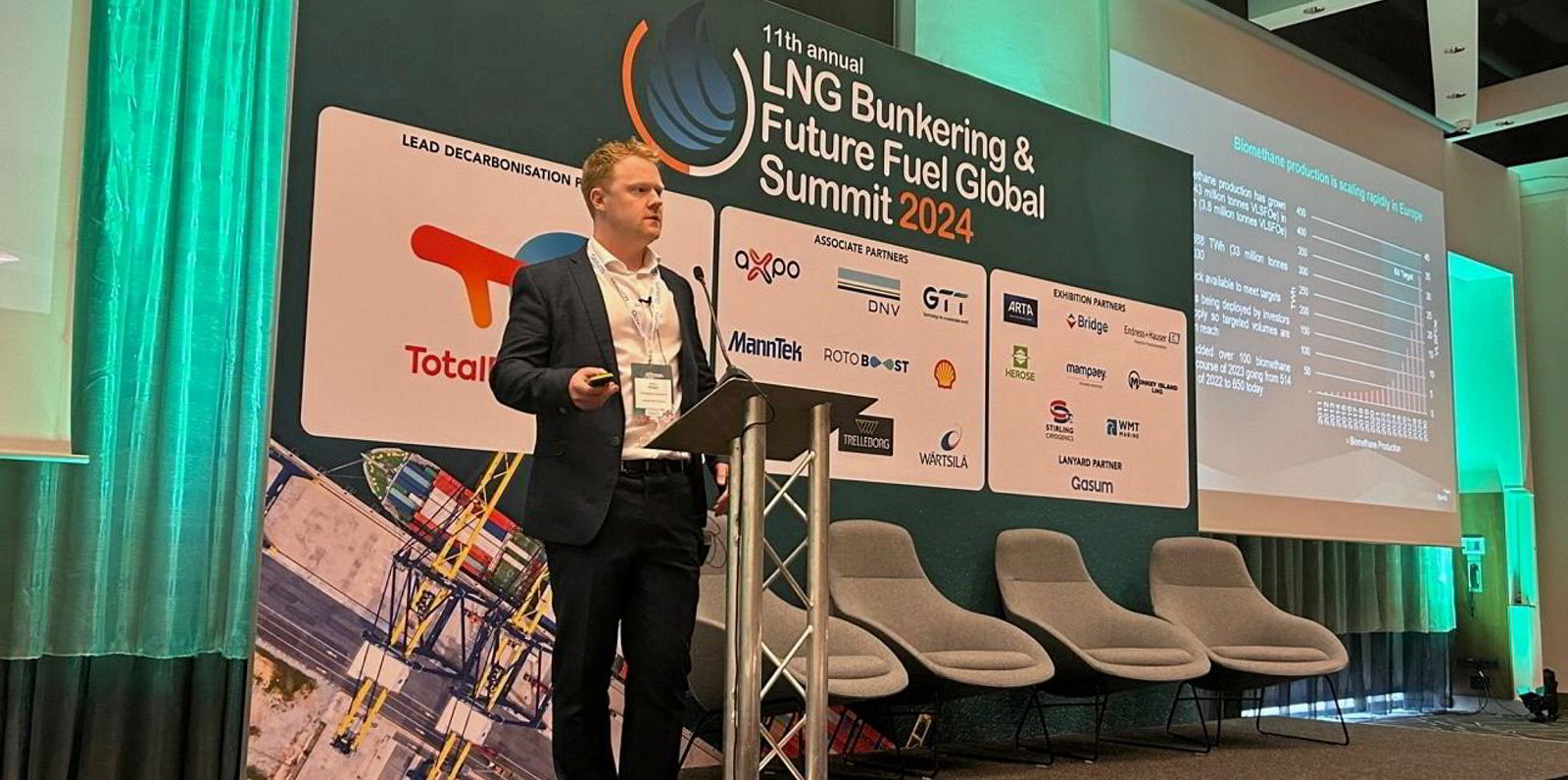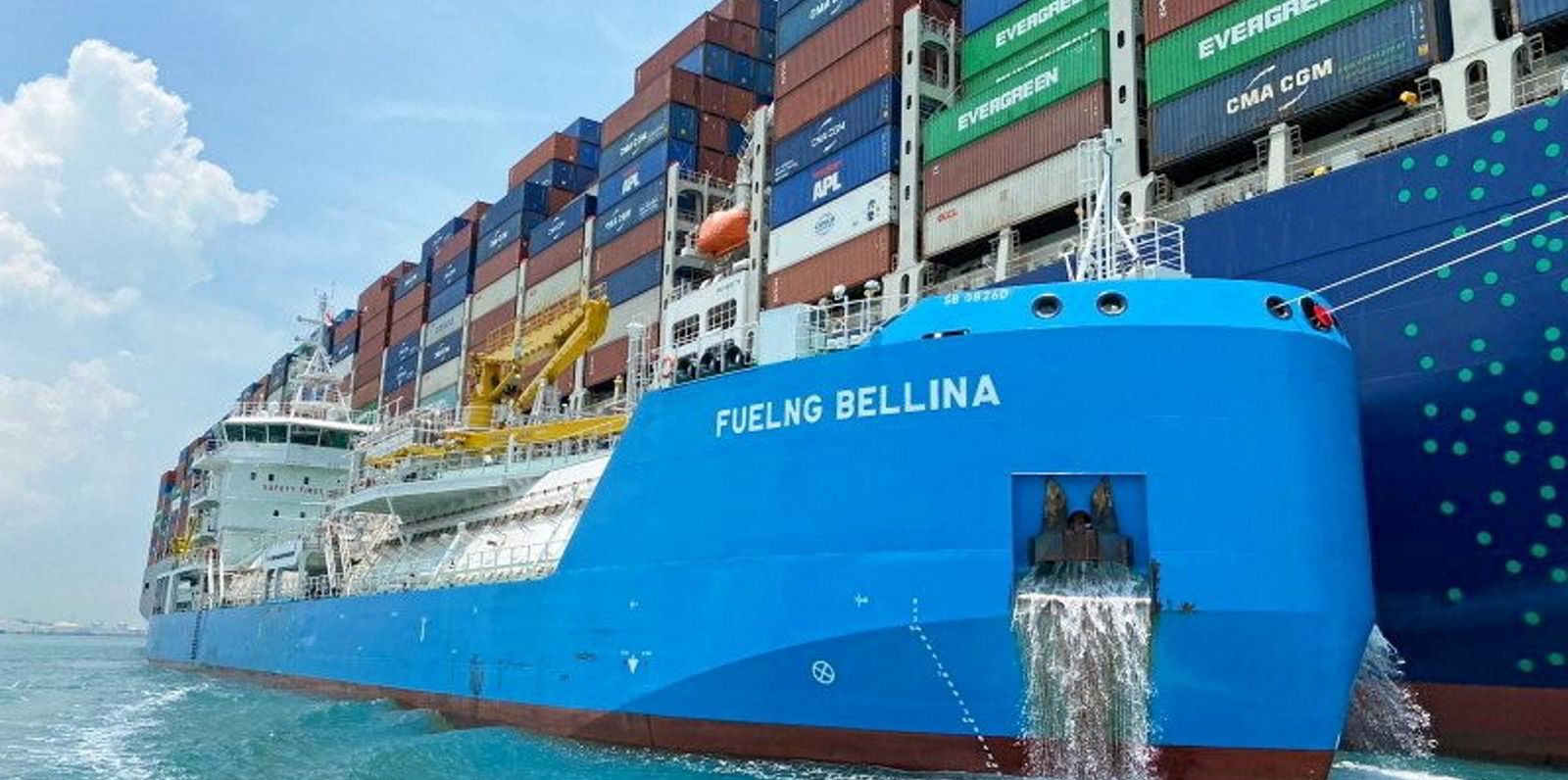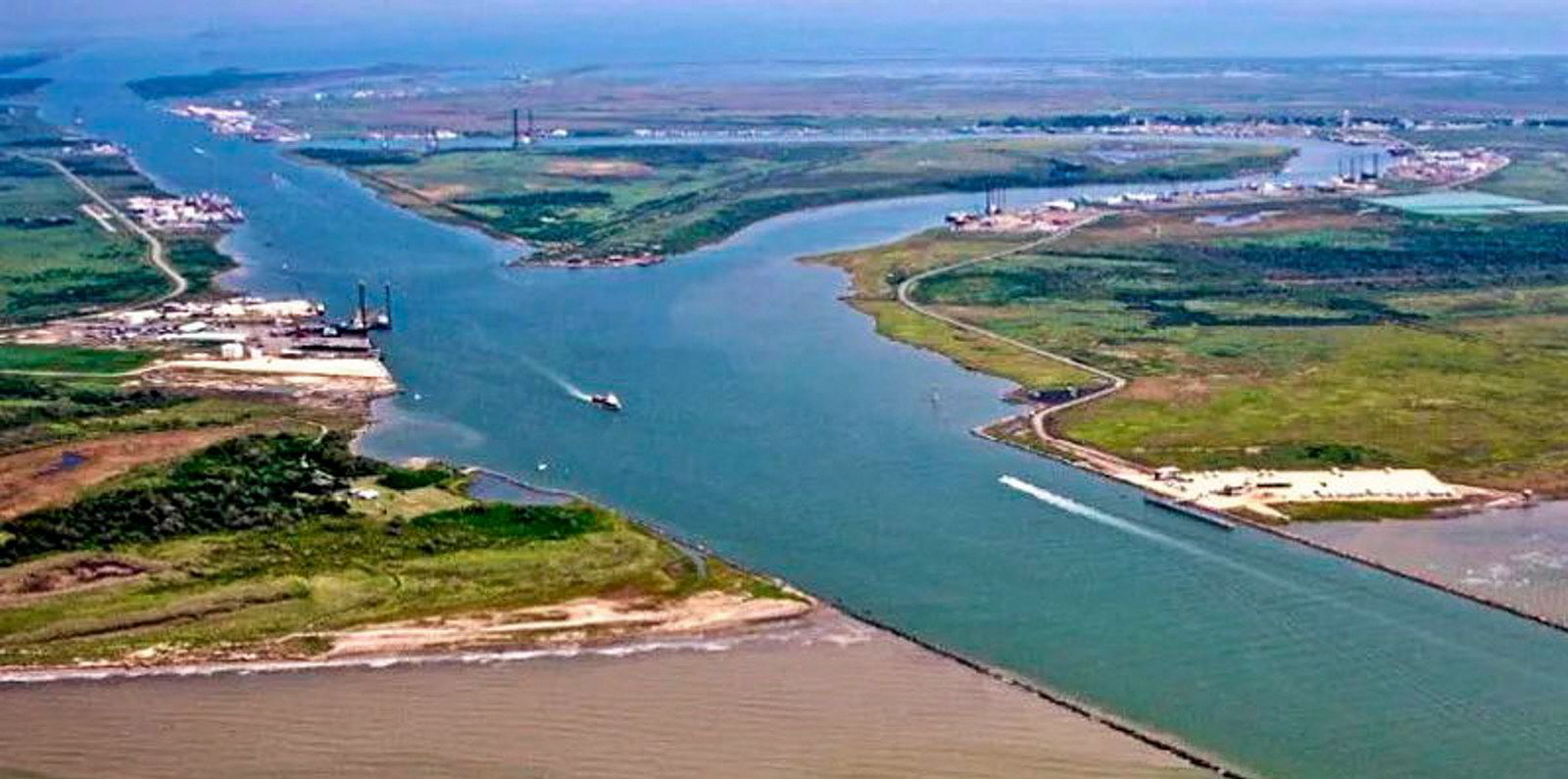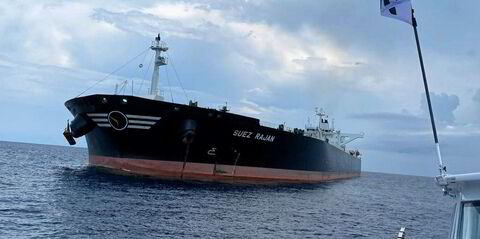Large investments are being made in biomethane or bio-LNG production that look set to provide sufficient volumes to meet the anticipated demand from LNG-fuelled vessels as owners move to decarbonise their fleets, according to energy and shipping sector advisers LansdowneMoritz.
Managing consultant Gary Regan said biomethane production in Europe has grown nearly tenfold in the last 11 years from 5 terawatt hours (TWh) in 2011 to 44 TWh in 2022.
The European Union target is 388 TWh, or 26m tonnes, of very low-sulphur fuel oil equivalent by 2030, which he said is “not necessarily unachievable”.
Regan, who was speaking at the 11th LNG Bunkering & Future Fuel Global Summit 2024 in Amsterdam, said the industry is seeing huge investment in production with 100 new plants in France in 2023 and a similar number in Italy last year driven by subsidies and regulated market prices.
He said there will be over 1,037 LNG-fuelled vessels on the water by 2027 with Europe likely offering a very liquid bunkering hub.
While the region’s share of the market is unclear, LansdowneMoritz estimates European LNG demand for shipping in 2030 at around 8m tonnes. He said if bio-LNG demand took just 10% of that for fossil LNG by the end of the decade, this would total 800,000 tonnes.
“Our view is that there will be enough biomethane, bio-LNG, for shipping,” he said.
Regan said the shipping industry is not there yet in wanting to pay for the product and there is no significant pressure from the regulatory environment for owners to be burning much biomethane before 2030.
He said the European biomethane production target stacks up at around 26m tonnes of LNG equivalent and shipping only needs a small fraction of that.
The real issue will be competition for the product from other market sectors like road transport.
Regan said that while biomethane will cost more than fossil fuels, it is “relatively cheap” compared to other low-carbon alternatives and will be competitive with bio-diesel.
He said scale in biomethane production can be difficult to achieve and there is a need to dispose of the by-products, including CO2, so building larger plants will help bring down pricing.
But he cautioned that not all biomethane is equal and its carbon intensity reduction will depend on the feedstock used to produce it, with big premiums for the carbon-negative varieties.
Regan said the company is being asked many questions on the availability of the product for shipping and admitted that LansdowneMoritz are “big believers in biomethane”.
Some observers feel the “LNG” tag in bio-LNG — a term initially used in the trucking market — is confusing the understanding of the product, which is not derived from natural gas.
For marine, the product is also being marketed as liquefied biomethane. “Liquefied biogas” is also used.
Biogas has traditionally been used locally to produce heat and electricity.
But many biogas plants are being upgraded and converted into biomethane plants so that the gas they produce can be fed into the grid.
There is also a debate about whether the fuel should be rebranded. Some players ask why other alternative fuels, such as methanol and ammonia, have simply been tagged with a “green” prefix.
The specialist consultant also touched on the bigger picture for LNG fuelling over the next few years.
He said for the period into 2026 and 2027, the industry is going to see LNG prices come down, which he described as “great news” for shipowners looking to bunker the fuel.
But in tandem with that, he said the “bad news” is that the price of LNG bunkers is likely to go up in the same period.
He said, linked to this, LansdowneMoritz sees a big difference between spot, short and long-term pricing for LNG bunkers.
“We see real potential value if shipping companies can move towards making longer-term commitments and decisions,” he said, adding that would likely reap “very significant rewards” from doing that.
Regan pointed to the huge growth in the 400m tonnes per annum global LNG market, which is due to grow by 50% with another 200m tonnes of liquefaction capacity already under construction.
He said when this huge wave of growth comes onstream LNG prices should come down and will likely go back to at least long-term historic averages, which is at least 20% to 30% down on current prices but with the potential to go lower.
LansdowneMoritz’s analysis done in conjunction with Fearnleys, which is based on the number of LNG-fuelled vessels on the water and those under construction, shows a gap will emerge for LNG bunker vessels in 2025 and grow larger in the subsequent two years.
He said there is no yard availability to build the large LNGBVs needed to supply vessels with big bunker requirements such as ultra-large container ships.
Regan sees a situation where LNG suppliers will be “maximising rent” and moving to sell their LNG at a premium to conventional fuels. “That is where we see the market going in 2026-2027,” he said.







